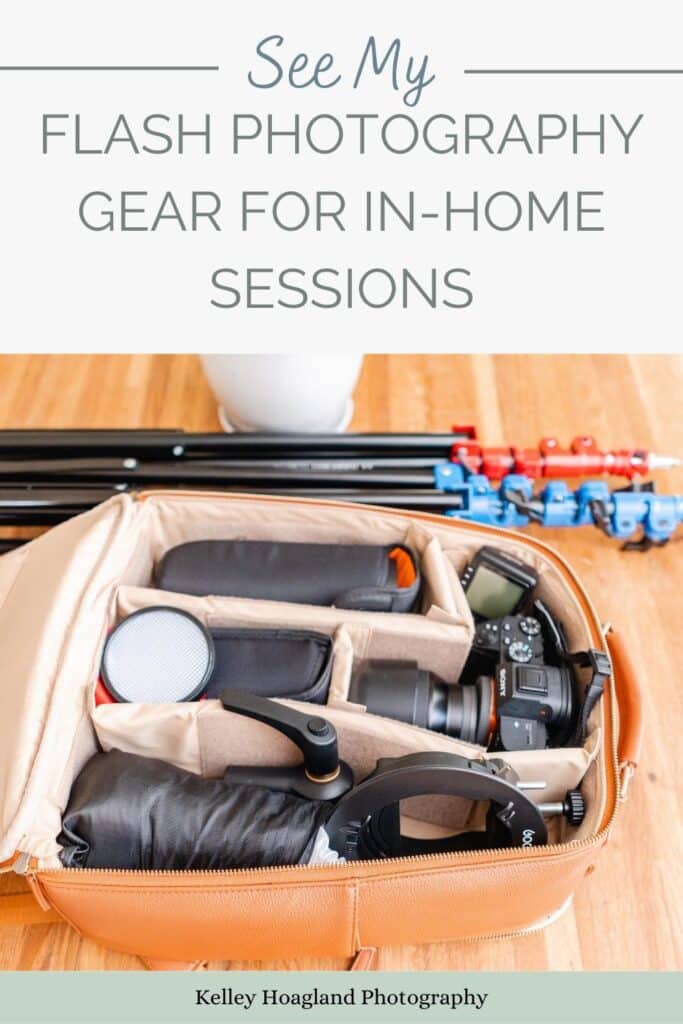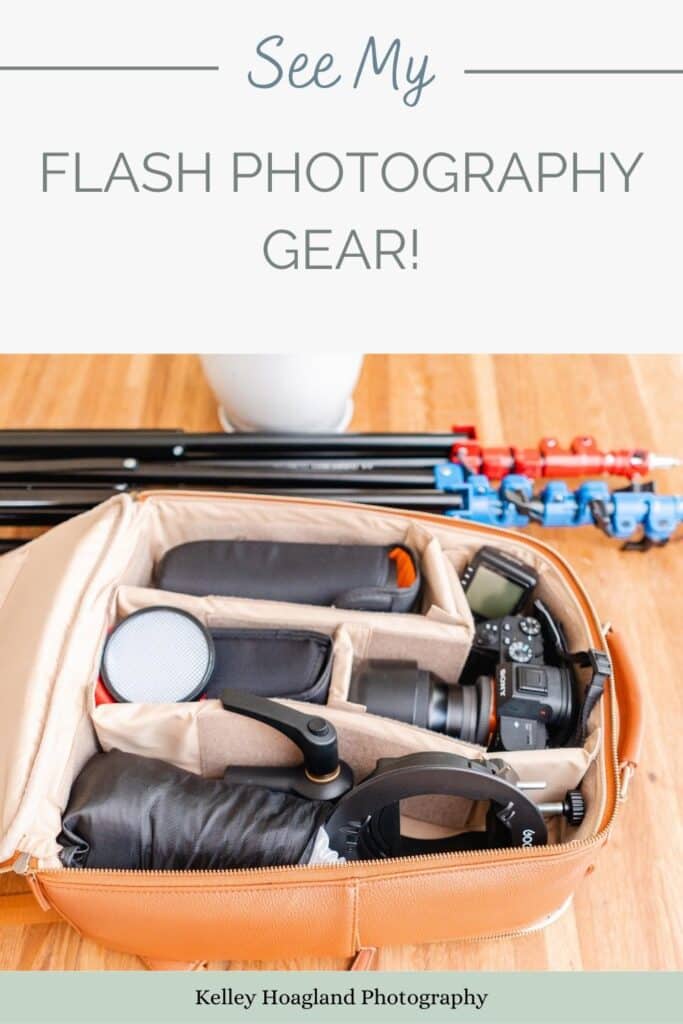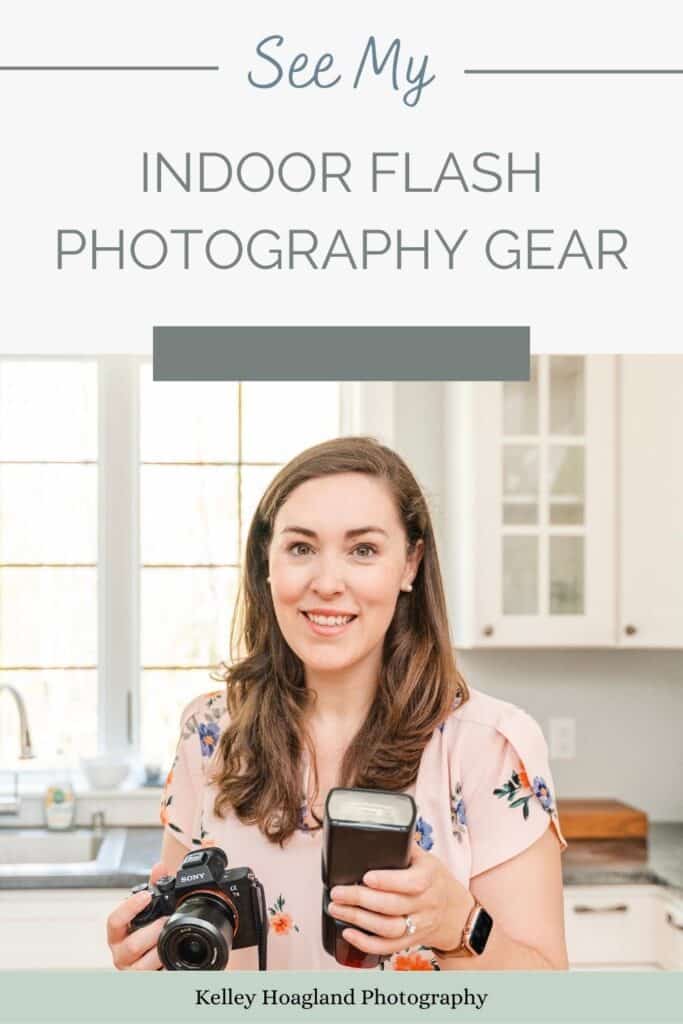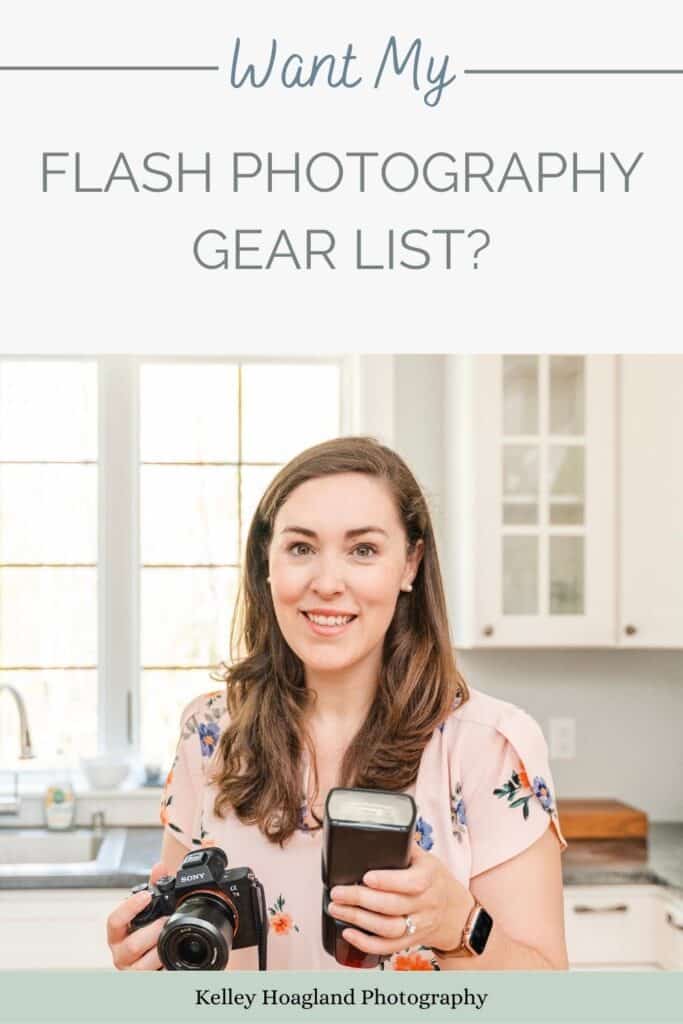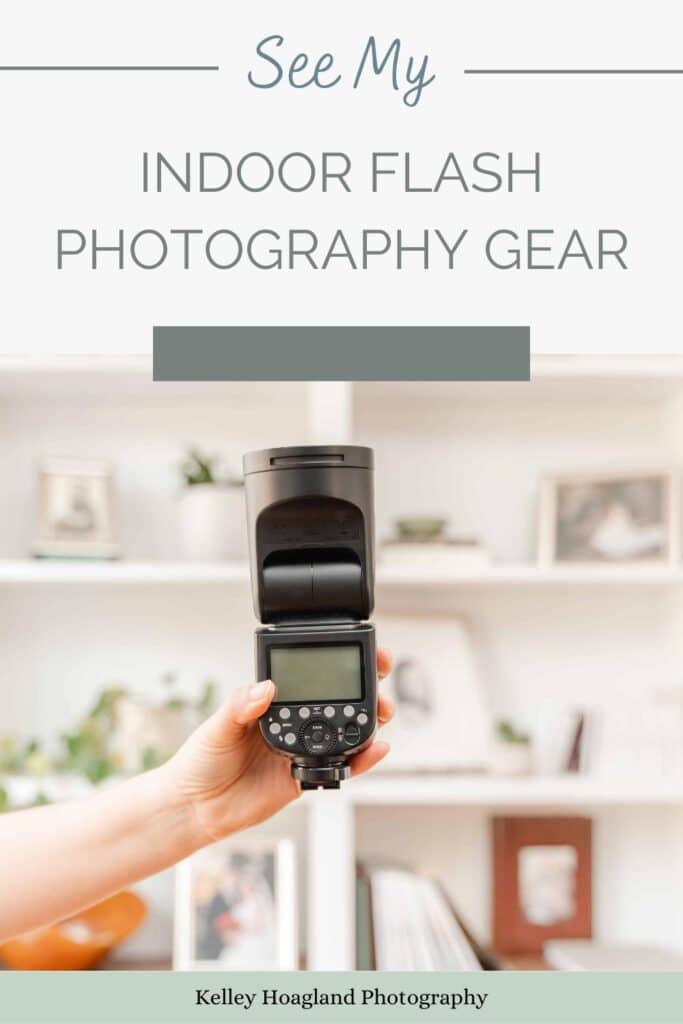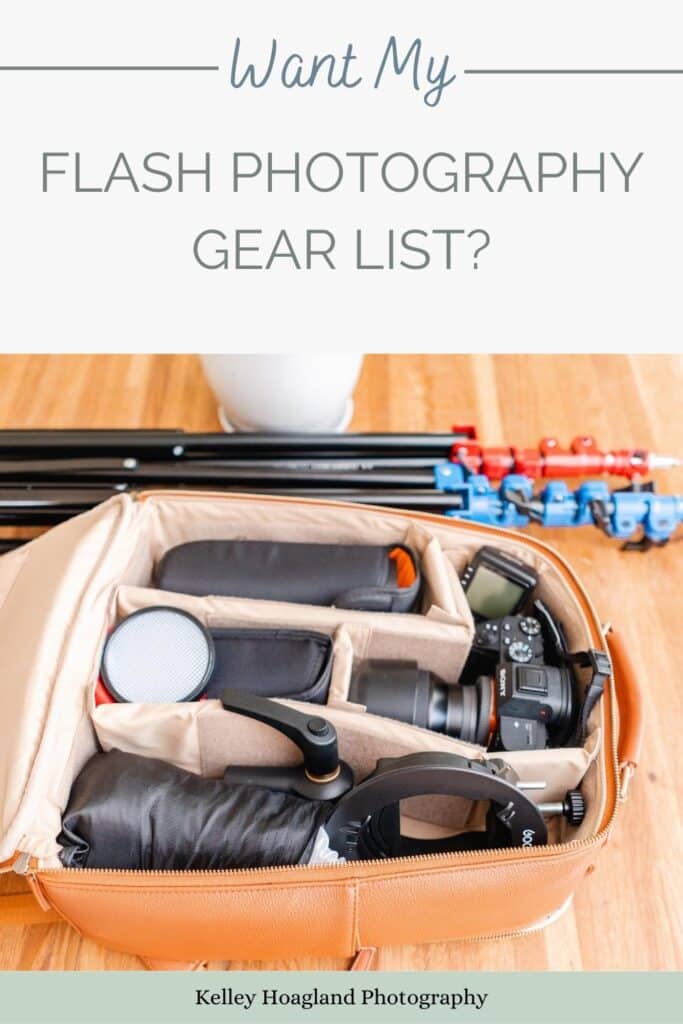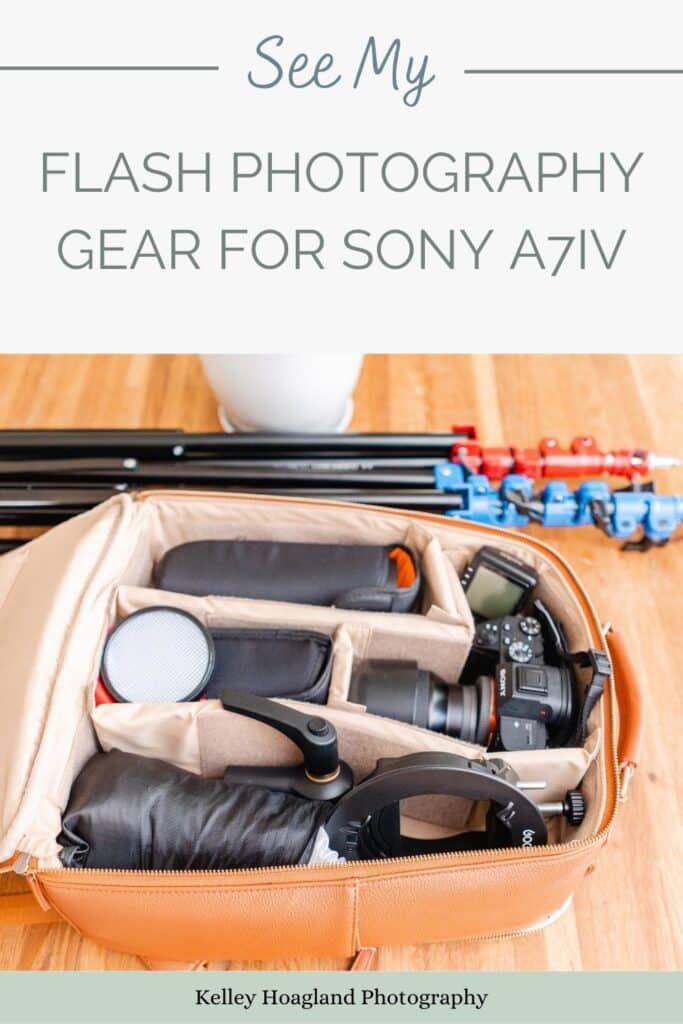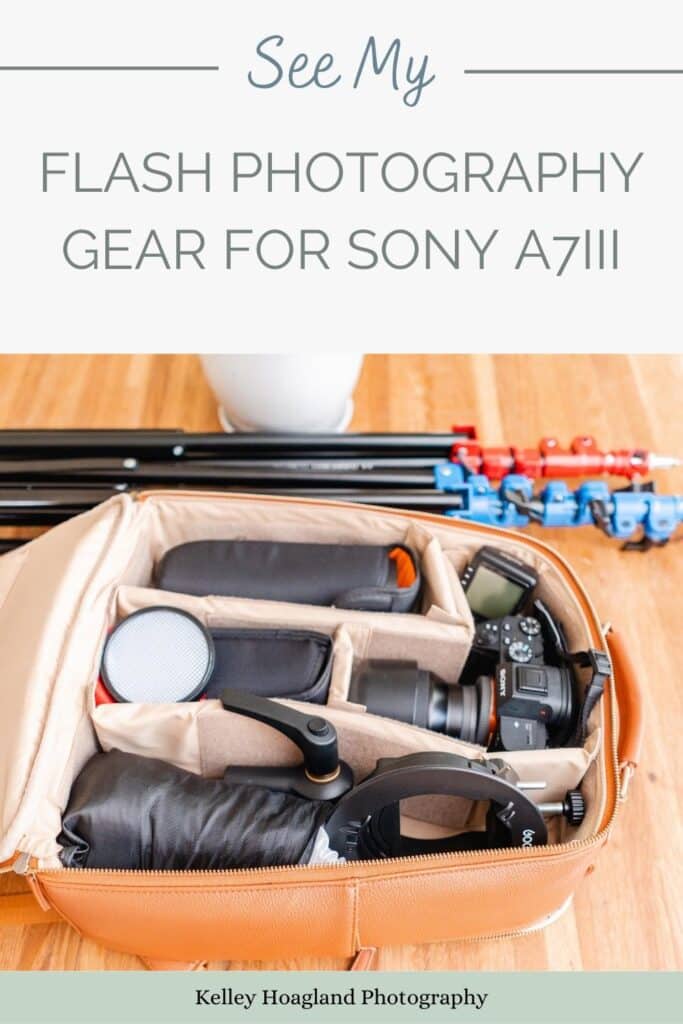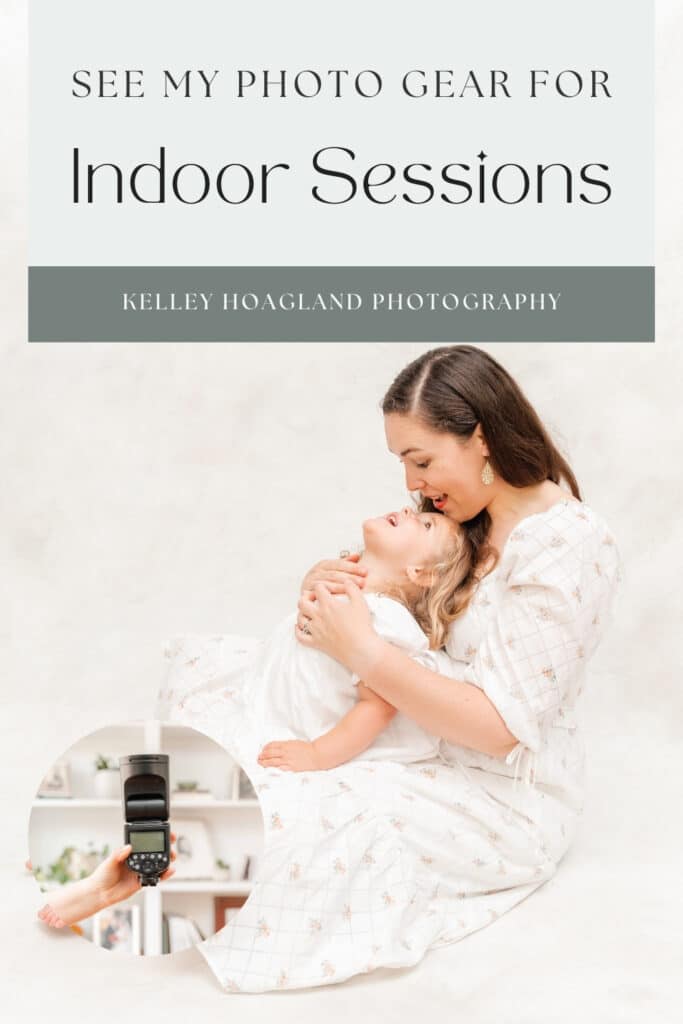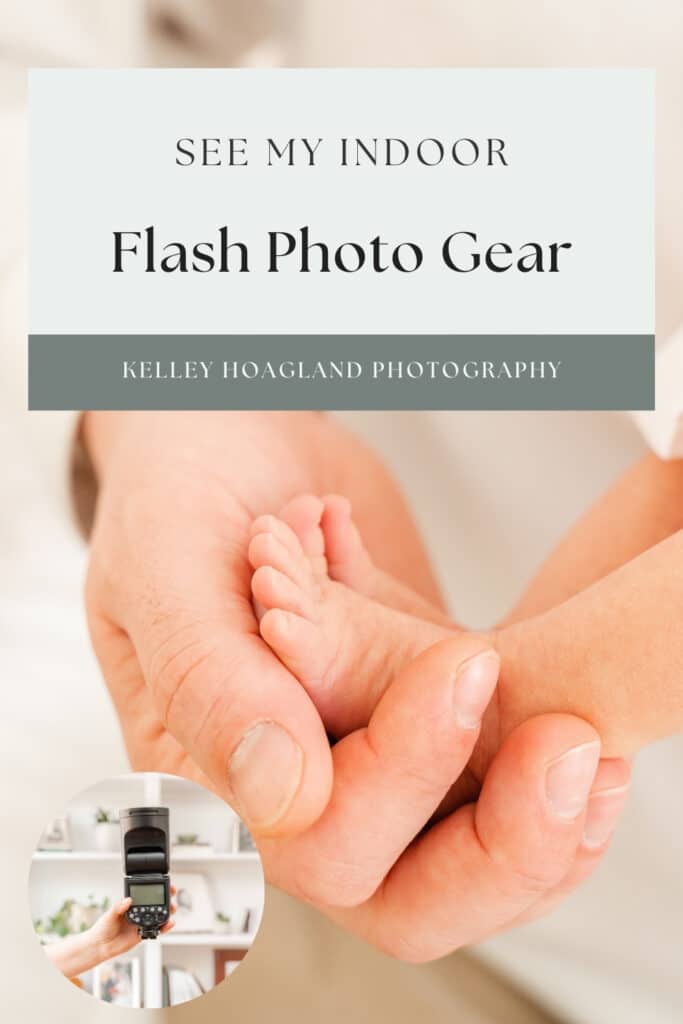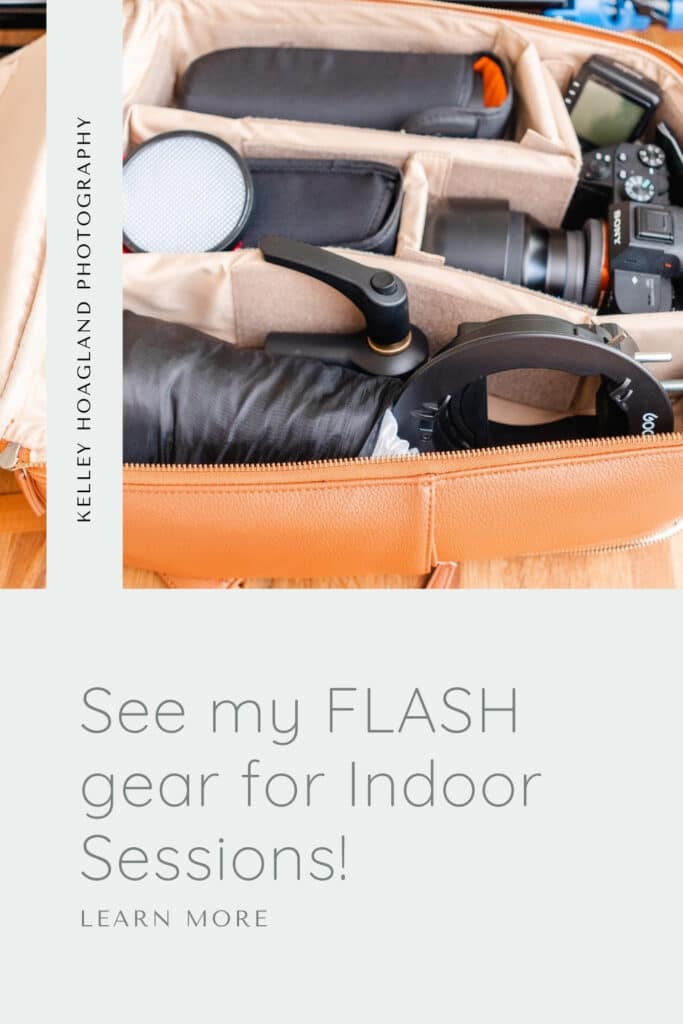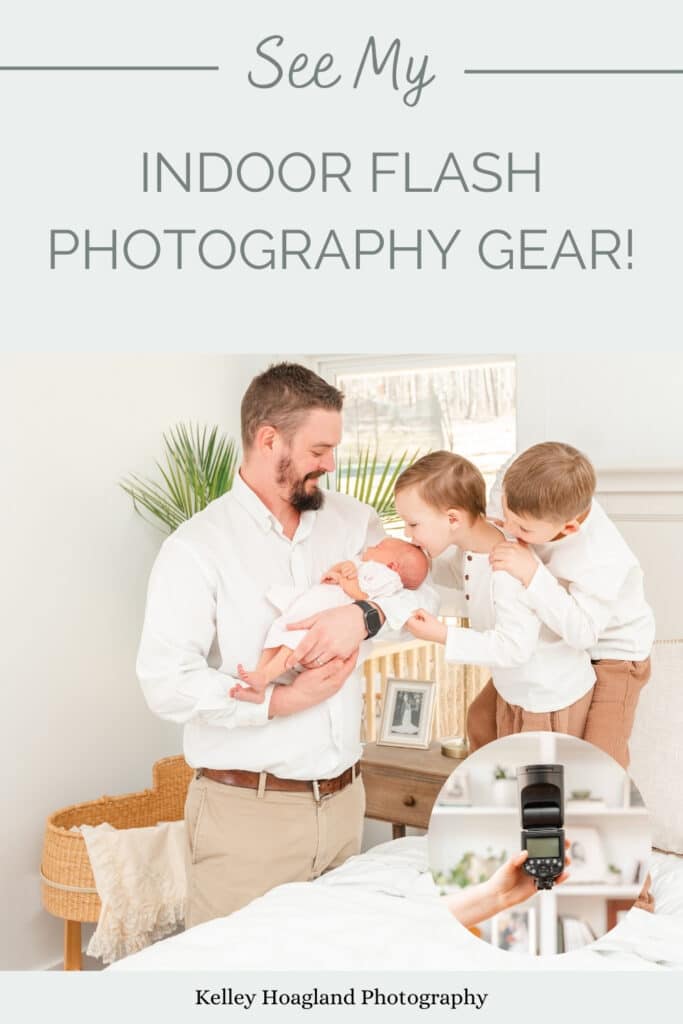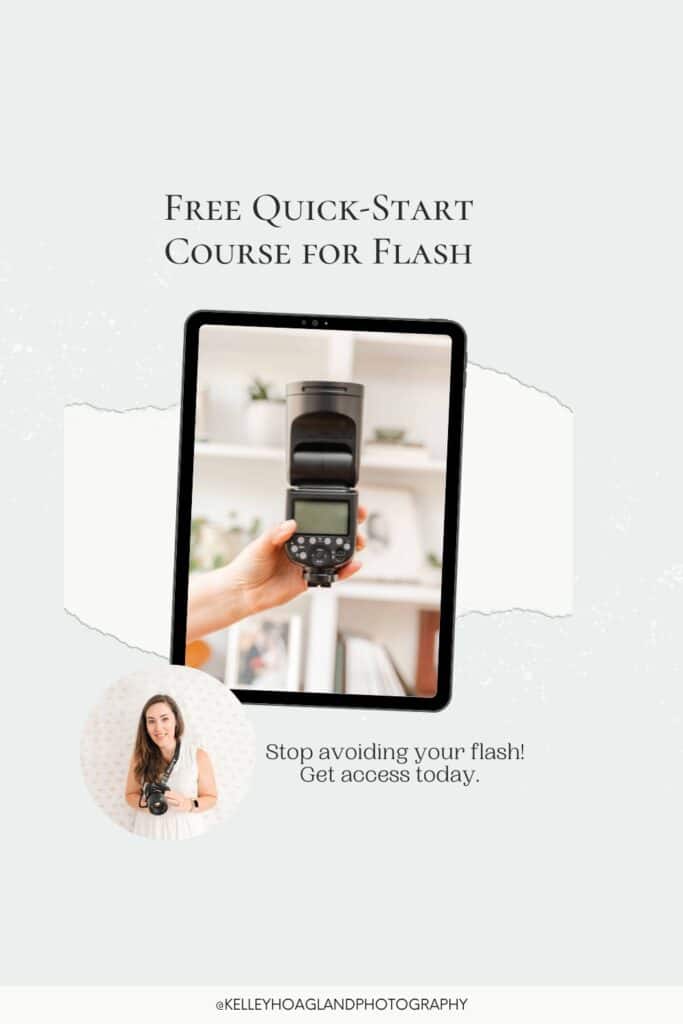My Flash Photography Gear List
In this series, No Fear Flash, I’ve provided a basic intro to flash photography. This info is specifically geared toward light and airy photographers who do indoor lifestyle sessions. For this post, I thought it would be helpful to share my flash photography gear list and go through what exactly I have in my camera bag and lug around for sessions in my clients’ homes.
This post contains affiliate links.

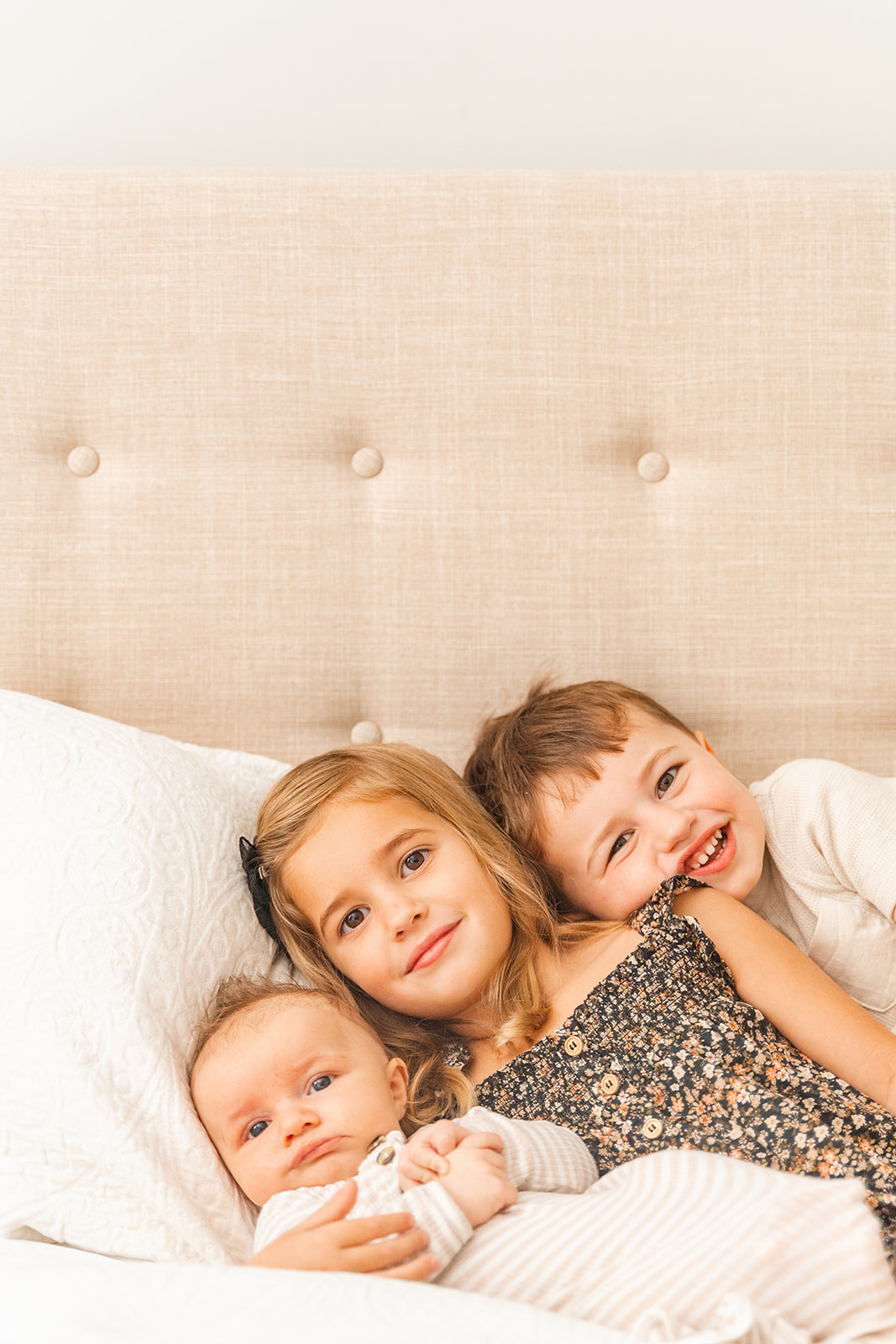
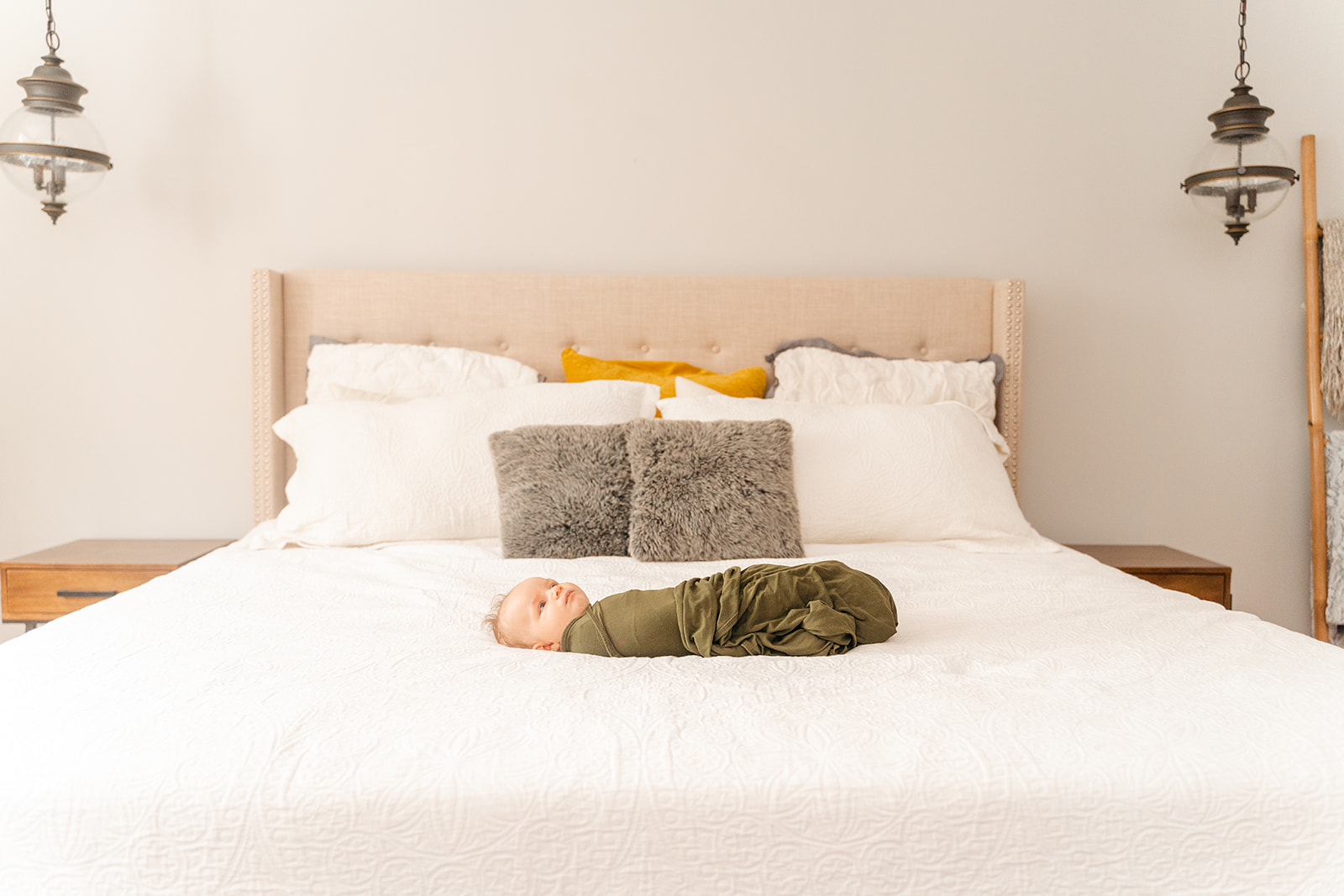
My Flash:
I use the Godox V1S (https://amzn.to/411L62D). Actually, I regularly use two of these during my sessions. As you are digging into the world of artificial lighting, you will find that some photographers use strobes and others use speed-lights. Strobes are generally more powerful. They also are larger in size and tend to be more expensive (especially if you want one that is battery powered). Speed-lights are smaller, less powerful, and battery operated. The Godox V1 is a speed-light.
I originally bought my Godox V1s for a wedding I was photographing, but I have used them in countless indoor lifestyle sessions since. I have yet to run into a situation where if felt they did not give off enough light. They are so compact and can easily fit into my camera bag. I also have Godox V860II (https://amzn.to/4ex3aoa) as a back up and as a 3rd light, should I need it. (Generally, I stick to two lights during family sessions.)
Get the FREE Course!
My Trigger
The Godox XProII TTL Wireless Trigger for Sony (https://amzn.to/3Z21Xkb) is the trigger I use to operate my off camera flashes. I love this trigger for it’s simplicity and the fact that it will allow me to use my VI and V860II flashes at the same time. I the second generation has a nice metal hot shoe that feels much more durable than the original.
My Modifiers
I own two Westcott 60 inch umbrellas (https://amzn.to/35WV6iM). Typically, I just bring one to my in-home sessions, but have a second that I sometimes pull out for my studio work. These get paired with the Happy Go 60 inch Parabolic Front Diffuser Cover (https://amzn.to/3Mw2OkP) for softer light.
My Light Stand Adapters
I own and use two different light stand adapters. I first purchased the Godox S2 Speedlight Bracket (https://amzn.to/3KiidU4). Adjusting the position of your light is a very smooth, fluid action with this adapter. My only complaint has been that it takes up a lot of room in my camera bag, which is already full of speed-lights, lenses, and my camera. More recently I’ve been taking the Wellmaking U Shape Flash 180 Swivel Mount Bracket (https://amzn.to/35ta9Bi) along to sessions because it takes up much less room in my camera bag.
My Light Stands
I have two Flashpoint Pro Air Cushioned Heavy Duty Light Stands (https://amzn.to/3Ck2IIj)that I bring to every session. While there are probably better stands out there, these are at a very reasonable price point and get the job done well. I do have to note that there was a difference in quality between the two stands. The first one I bought, the the color red, was actually less “heavy duty” than the second stand I bought in the color blue.
My Light Meter
Confession: I don’t actually use a traditional light meter. When metering light and setting white balance for my outdoor, natural light sessions, I use the Expodisc (https://amzn.to/3tz4nGf). I love how the Expodisc has contributed to my outdoor sessions looking more consistent, so it only made sense to me to use it when photographing sessions inside.
So there you have my flash photography gear list! As you will note, I did put a considerable investment into my two main speed-lights (and I do tend to prefer the results I get when using them). However, the supporting gear of light stand, adapters, and modifiers do not have to break the bank to be effective.
Want more flash photographer education, including my flash photography gear list delivered straight to your inbox? Subscribe below!
Get the Flash Quick Start Course FREE!
